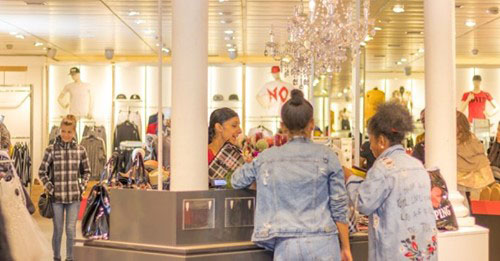By Daphne Howland and Caroline Jansen
Source: www.retaildive.com, February 2021
The department’s Census Bureau tracks estimates each month. Retail Dive provides the numbers for key segments, and their year-over-year progress, or decline.
Editor’s Note: Comparisons for individual segments are updated each month to reflect the government’s revisions to its year ago figures. A full methodology for how Retail Dive tracks retail sales figures is included at the bottom of this page.
Every month, the U.S. Department of Commerce, Census Bureau, releases its first calculation of the previous month’s retail sales. At Retail Dive, we report these figures by grouping the key segments that define “retail” in a way that we hope is most meaningful to the industry.
We use unadjusted, advance numbers and year-over-year comparisons, with the government’s most recent revisions to its year-ago estimates. And although we of course include e-commerce, captured in the federal report as “nonstore retailers,” readers will note that the government includes sales from businesses not generally thought of as “e-commerce.”
How key retail sales fared year over year
Total sales+13%Non-store+26%Sporting goods, hobby, bookstores+24%Furniture & home+10%General merchandise+8%Electronics & applicances-4%Clothing & accessories-13%
- January 2021
Total monthly sales: $175.16B
Retail sales among the segments tracked by Retail Dive soared 13% year over year in January to $175.2 billion, according to numbers released Wednesday by the U.S. Department of Commerce. The federal government, which counts restaurants and other segments not covered by Retail Dive’s tracker, pegged the year-over-year increase at 10.8%.
The gains from January 2020 were broad-based, with e-commerce surging 26%, sporting goods and hobby store sales up 24.4%, furniture and home sales up 9.8% and general merchandise sales up 7.6%. Home-oriented sales, which have thrived during the pandemic, have more growth ahead, according to GlobalData, where data “show that a lot of households still have projects and improvements they wish to undertake, meaning elevated demand should persist for at least the next couple of months,” according to an emailed report from Managing Director Neil Saunders.
The strength in e-commerce nevertheless reflects a month-to-month ebb as more consumers go back to physical stores, Saunders also said. Overall, though, the results shattered expectations, and are especially surprising because they come at a time when many retailers are busier with returns than with sales.
“Normally, January is a slow month for retailers, but nothing has been normal about the past year,” Ted Rossman, credit card analyst at Bankrate.com, said in emailed comments. “The improvement in retail sales in January came despite a continued surge in the virus, which brought grim new records in daily U.S. deaths and cases. Consumers are learning to adapt and are spending in spite of the virus, not because it has gone away.”
The January surge is thanks largely to the government’s last-minute agreement on a second pandemic relief package at the end of the year, according to several analysts. As Wells Fargo economists put it, the checks “appear to have burned a hole in consumers’ pocket.” And it comes after a weak final quarter of the year “signaling a broad weakening in consumer spending in the face of a national resurgence in COVID-19 cases,” according to emailed comments from Jim Baird, chief investment officer at Plante Moran Financial Advisors.
Not all retailers advanced last month. Electronics sales dipped 4%, and department store sales, experiencing among their slimmest declines in recent months, fell 1.4%. Apparel sales, which have been hammered the past year with so many people stuck at home for both work and play, tumbled 12.6%.
In 2021, the economy in general and retail sales in particular will remain dependent at least to some extent on the government’s continued support of consumers and the increased numbers of unemployed workers, several analysts also said. Both also continue to be dependent on the effective distribution of vaccines against COVID-19, according to Baird.
“By our numbers, at least half of the stimulus money sent to individuals has been spent already, and the extension of unemployment benefits likely gave those without work the confidence to spend versus save,” Robert Frick, corporate economist at Navy Federal Credit Union, said in emailed comments. “Still, more than 30% of the stimulus to Americans was banked, which points to stronger spending in the next few months, even without a third round of direct payments.”

